Educator Reflects on Awls Experience
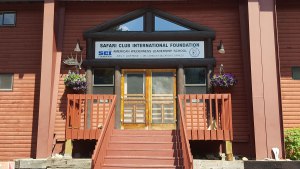 While attending our annual Mid-Michigan chapter fundraiser at the Soaring Eagle this past February, our Front Sight editor and very active SCI member, Mary Harter, told my wife, Sara, and me that we needed to check into the “AWLS” program. The American Wilderness Leadership School (AWLS) was a program I knew of and had contemplated attending for years but couldn’t seem to find the time or didn’t see how it would fit into my classroom. I logged Mary’s suggestion in my mind, but wasn’t sure it would work this year either, because I was planning to take my oldest son on safari to South Africa.
While attending our annual Mid-Michigan chapter fundraiser at the Soaring Eagle this past February, our Front Sight editor and very active SCI member, Mary Harter, told my wife, Sara, and me that we needed to check into the “AWLS” program. The American Wilderness Leadership School (AWLS) was a program I knew of and had contemplated attending for years but couldn’t seem to find the time or didn’t see how it would fit into my classroom. I logged Mary’s suggestion in my mind, but wasn’t sure it would work this year either, because I was planning to take my oldest son on safari to South Africa.
Within the next month, I changed my mind. When we received our issue of Safari Times, there was a story about AWLS and the benefits it had for hundreds of teachers each year. After Sara and I read through the article, we decided we needed to investigate the program further. Within a week, we contacted Mary who got us in touch with Doug Chapin, the head of the education committee for our Mid-Michigan Chapter. Doug was very helpful in getting us all the information we needed to apply and prepare for our trip to Wyoming.
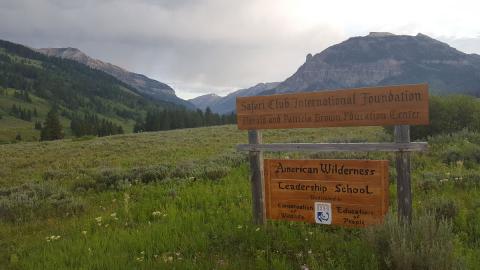 When we told people of our upcoming trip, some assumed it would only be a vacation, almost like a working holiday. Let me assure you it was not. Don’t get me wrong, we truly enjoyed every aspect of the school, but our days were on a schedule from 7:00 a.m. until 9:00 p.m. We were exposed to a multitude of classroom and outdoor experiences. We discussed things from wildlife ecology to conservation and everything in-between.
When we told people of our upcoming trip, some assumed it would only be a vacation, almost like a working holiday. Let me assure you it was not. Don’t get me wrong, we truly enjoyed every aspect of the school, but our days were on a schedule from 7:00 a.m. until 9:00 p.m. We were exposed to a multitude of classroom and outdoor experiences. We discussed things from wildlife ecology to conservation and everything in-between.
Most people took a day or two to get to know each other and open up and people with common interests gravitated toward one another, but we all mingled every day. In all, we had 36 teachers from all over the country converging along Granite Creek exploring how we could incorporate conservation into our classrooms. There were teachers from as far west as Alaska and California, as far south as Florida and as far east as Rhode Island.
It was an awesome experience to see all these educators come to this training with open minds. Many in our class did not hunt (only six of us did), some didn’t agree with hunting and others questioned why people hunt and hang animals on their walls. Some of the subjects we touched on divided the class while others brought us together, but throughout it all, people were civil and open minded.
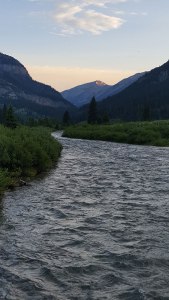 I felt, as a hunter, I was acting as an ambassador to hunting. During a break one day in the commons area while having a conversation about my recent trip to South Africa with a classmate, another classmate asked why I felt the need to have animals mounted on my walls and what happened to the rest of the animals I hunted. I was taken by surprise with that question because, coming from the community, these questions are never asked. I found it a great opportunity to explain why I hunt and the importance of hunting to the communities of South Africa as well as my own family at home.
I felt, as a hunter, I was acting as an ambassador to hunting. During a break one day in the commons area while having a conversation about my recent trip to South Africa with a classmate, another classmate asked why I felt the need to have animals mounted on my walls and what happened to the rest of the animals I hunted. I was taken by surprise with that question because, coming from the community, these questions are never asked. I found it a great opportunity to explain why I hunt and the importance of hunting to the communities of South Africa as well as my own family at home.
After explaining my respect for the animals and wanting to share their majesty as well as my hunting memories through the mounts on my wall, I was able to show this person a different perspective on us as hunters. I also explained all of the animals we hunted in South Africa as well as the ones my family hunts at home were used for food, for either us on our trip or the workers on the farms we were hunting. This also allowed us to discuss the differences between hunters and poachers. Unfortunately, up to this point in this person’s mind, hunters and poachers were in the same category.
Stemming from this conversation was a question from another individual who agreed with people owning guns and hunting but couldn’t understand how people could call it hunting when hunting animals in fenced areas. I used an analogy I read years ago about fishing. I explained that some fish are caught out of very large lakes and it’s called fishing, while others are caught out of stocked ponds and it’s called fishing as well. Then I went on to explain the ranch we hunted in South Africa had 20,000 acres of fenced in property and very few animals were impacted by the fences. A few days later I received a video from the safari company we hunted with of a kudu bull effortlessly jumping over an eight foot plus fence which I showed to this individual.
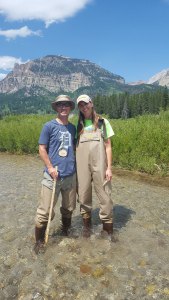 In both cases, these people had legitimate questions and I felt I answered them adequately. That doesn’t mean these people agreed with me when we were done talking, but they at least had a new angle to look at. I applaud these teachers for coming to this training with the questions they had and having the willingness to listen to other people’s perspectives with open minds.
In both cases, these people had legitimate questions and I felt I answered them adequately. That doesn’t mean these people agreed with me when we were done talking, but they at least had a new angle to look at. I applaud these teachers for coming to this training with the questions they had and having the willingness to listen to other people’s perspectives with open minds.
During the duration of the week we also had many enjoyable field experiences including outdoor survival, visiting gas fields, going to the elk refuge and rafting down the Snake River to mention a few. One of our more enjoyable experiences was rafting the Snake River. By the time we did this, we were all very comfortable with each other and our raft guide was awesome; even abandoning the raft at one point to show up all of us jumping into the river by doing a twisting 360 back flip. We also had many people ride on the front of the raft (like a hood ornament) through the rapids. This was called “riding the bull.”
Everyone going through the training were also able to shoot skeet, .22 pistols and rifles as well as bows. In fact, we all became certified instructors of the National Archery in the Schools Program, which I am trying to implement into the school I teach in my new exploratory class.
The AWLS program had perfect timing for me. I was informed before leaving for summer vacation I would be teaching a new class in the fall — a class with which I have a great deal of leniency in what I want to teach. The Monday after we returned from our training, I went in to speak with my principal about making my class an outdoor education class where I would apply many of the lessons learned in Wyoming, including archery, stream ecology and outdoor survival.
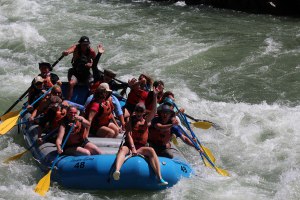 Sara and I both found multiple other lessons we will be able to incorporate into our current classes as well — me in my geography class and Sara in her science class. We are both excited to implement what we learned and to expose as many young people as possible to the many wonders the great outdoors offers us all.
Sara and I both found multiple other lessons we will be able to incorporate into our current classes as well — me in my geography class and Sara in her science class. We are both excited to implement what we learned and to expose as many young people as possible to the many wonders the great outdoors offers us all.
Sara and I would like to thank everyone within our Mid-Michigan Chapter who made it possible for us to attend this spectacular program. It’s through efforts like these that we will be able to continue educating young people about conservation, the importance of nature and the value hunting has in preserving the great outdoors we currently experience.–Josh Christensen

